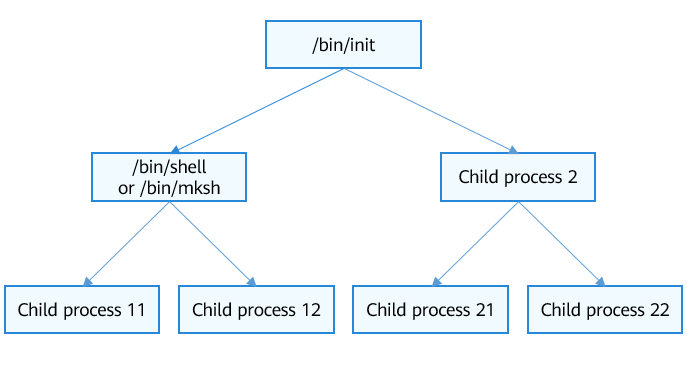Startup in User Mode
Startup of the Root Process in User Mode
The root process is the first user-mode process in the system. The process ID is 1. The root process is the ancestor of all user-mode processes.
Figure 1 Process tree

Startup Process of the Root Process
Use the link script to place the following init startup code to the specified location in the system image.
#define LITE_USER_SEC_ENTRY __attribute__((section(".user.entry")))
LITE_USER_SEC_ENTRY VOID OsUserInit(VOID *args)
{
#ifdef LOSCFG_KERNEL_DYNLOAD
sys_call3(__NR_execve, (UINTPTR)g_initPath, 0, 0);
#endif
while (true) {
}
}
NOTE
The preceeding code is in kernel/liteos_a/kernel/user/src/los_user_init.c. The value of g_initPath can be /dev/shm/init or /bin/init, depending on the startup settings.
Use OsUserInitProcess to start the init process. The procedure is as follows:
-
The kernel calls OsLoadUserInit to load the code for startup.
-
A process space is created to start the /bin/init process.
Responsibilities of the Root Process
-
The root process starts key system programs or services, such as shell.
NOTE In OpenHarmony, the init process reads /etc/init.cfg and runs commands or starts processes based on the configuration. For details, see init Configuration File.
-
The root process monitors the process for reclaiming the orphan process and clears the zombie processes in child processes.
Running Programs in User Mode
A user-mode program can be started in either of the following ways:
-
Using shell commands
OHOS $ exec helloworld OHOS $ ./helloworld OHOS $ /bin/helloworld -
Using POSIX APIs Use Fork() to create a process, and call exec() to execute a process.